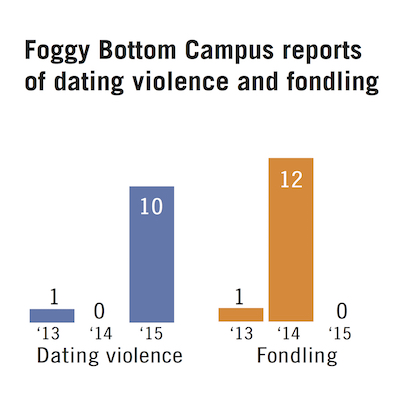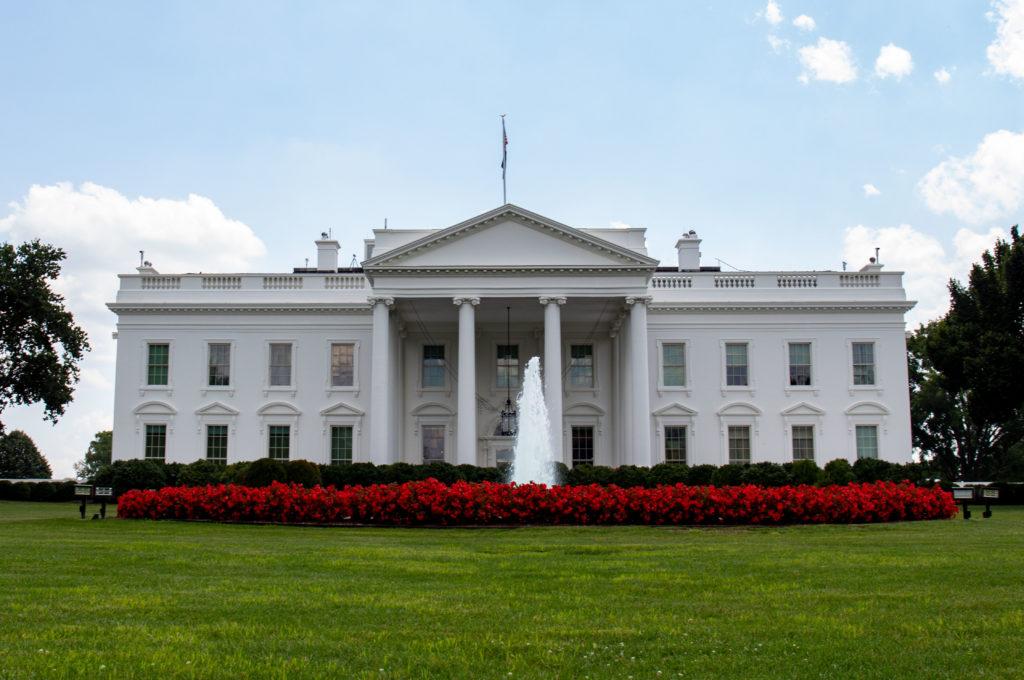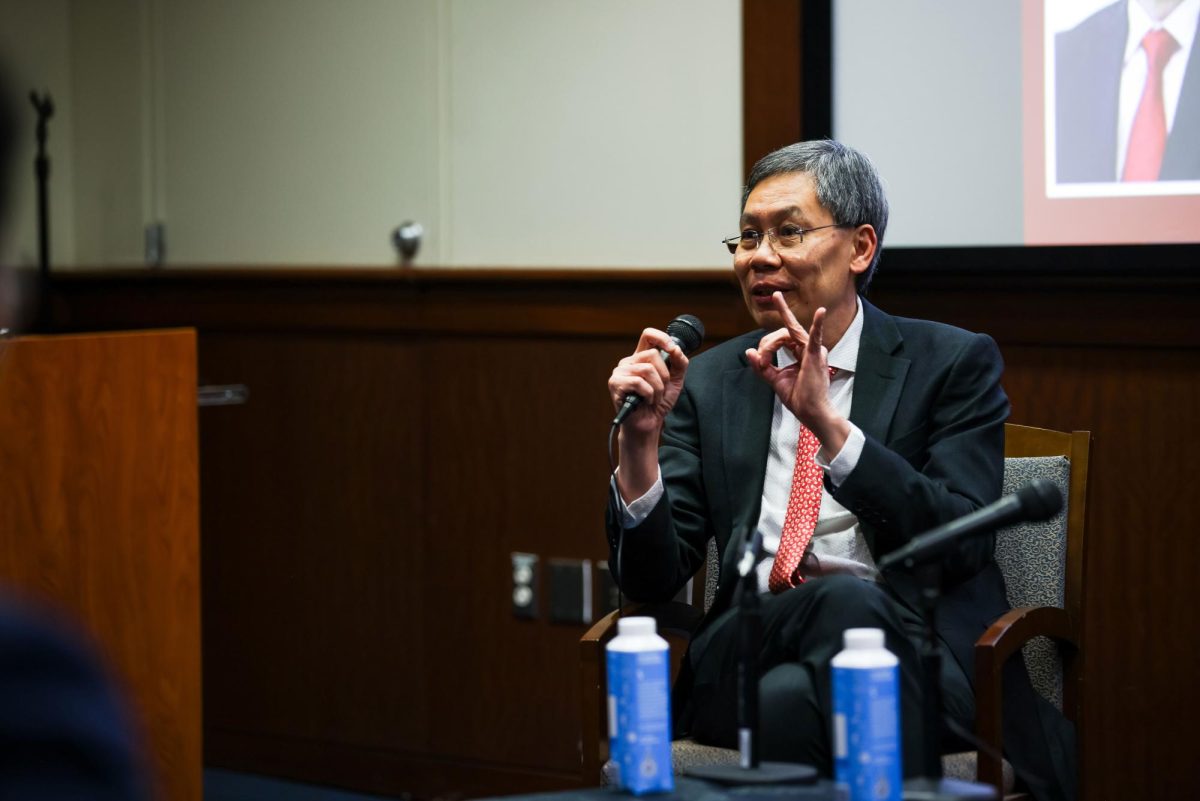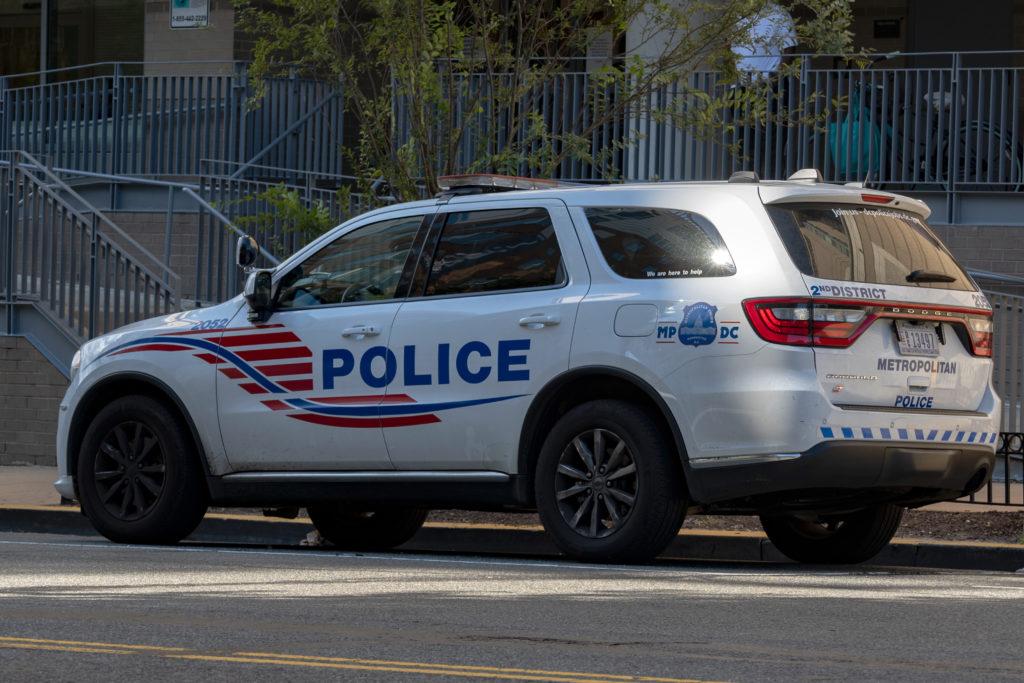Officials said a spike in the number of instances of dating violence reported last year was caused by an increased awareness of sexual violence.
There were 10 reports of dating violence on the Foggy Bottom Campus last year, compared to zero reports in 2014. Experts and University Police Department Chief RaShall Brackney said the national discussion about sexual assault on campuses, including dating violence, has increased in recent years – making more students comfortable reporting sexually violent crimes.

“With this increased awareness and education, we have seen an increase in the numbers of students who are reporting their experiences to both law enforcement personnel and campus authorities,” Brackney said.
There were 19 reports of domestic violence on the Foggy Bottom Campus in 2015, the same as the number in 2014. And the number of reported rapes on the campus between 2014 and last year stayed about the same – with 22 rapes reported last year and 23 the year before.
The number of stalking reports and fondling reports on the Foggy Bottom Campus both dropped to zero incidents in 2015, according to the security report. There were 12 reported fondling incidents in 2014 and 10 stalking incidents two years ago.
Brackney did not say why she thinks the number of reported fondlings on campus decreased from 12 to zero last year. She said UPD did not make any changes to the way the University records fondling reports.
“UPD did not implement any new policies regarding the reporting of incidents of fondling,” Brackney said.
GW defines dating violence as sexual or physical assault by someone who is in a “social relationship of a romantic or intimate nature” with the person doing the crime. For domestic violence, the person committing the violence must be the survivor’s spouse or intimate partner or someone who lives with the survivor.
Both Georgetown and American universities had a decrease in dating violence reports last year, according to the annual security reports from those universities. Georgetown University had one report of dating violence two years ago and none last year. The number of reported dating violence incidents at American University have declined in the past three years, with seven in 2013 to three in 2014 to two in 2015, according to the university’s report.
Under the Clery Act, the universities must release campuses’ criminal statistics every year. The most recent reports cover the years 2013 through 2015.
Cynthia Deitch, an associate professor of women’s studies, said the variance in numbers between institutions could show that GW defines the term differently than how other schools do.
“The term dating violence could be something that was folded into something else that stands out and Georgetown reports it differently,” Deitch said.
John Clune, a lawyer who has represented rape survivors in high profile cases against basketball player Kobe Bryant and Florida State University quarterback Jameis Winston, said campus police departments’ definition of dating violence can vary, which can affect the numbers.
Institutions with low numbers of reported crimes like dating violence may have manipulated statistics or redefined the crimes to not count toward the overall number of dating violence cases, Clune said. He said GW’s numbers, although they are higher than the reports of dating violence at other schools, are probably still lower than the actual number of dating violence incidents that have occurred.
“Ten is an incredibly low number, and it doesn’t even begin to reflect most dating violence cases,” he said. “It’s not a reflection of what is really going on.”
Jocelyn Jacoby, the co-president of Students Against Sexual Assault, said the spike reflects more thorough sexual assault education at GW. More students are able to identify sexual violence and know how to report it, she said.
“People are recognizing unhealthy relationships the way they weren’t before and now a way to report it,” Jacoby said. “An increase in reporting is a good thing.”
Thirteen percent of responding students said they experienced unwanted sexual harassment, sexual assault or domestic and dating violence, according to last year’s sexual climate survey that was released in September. The survey results showed that 32 percent of responding students said they knew how to contact the Title IX Office.
Jenny Wesberry, the director of operations for SAFE, Inc., an organization that provides services for survivors of domestic violence in D.C., said an upward spike is indicative of more awareness about dating violence.
“Over the past few years because of the education and outreach, it is not happening more frequently, it’s just being reported more,” she said.
Last academic year, the former SASA president started a program with other students in D.C., Maryland and Virginia to raise awareness of sexual assault and dating violence in order to decrease instances of the crime.
A former student, Ricca Prasad, filed a complaint against GW last year claiming that the University mishandled her case of dating violence.
Wesberry added that she would be more concerned if the numbers for dating violence decreased, because that would mean people aren’t aware enough to report it.
“There is a correlation there: The more you talk about it the more people come forward,” Wessberry said.








